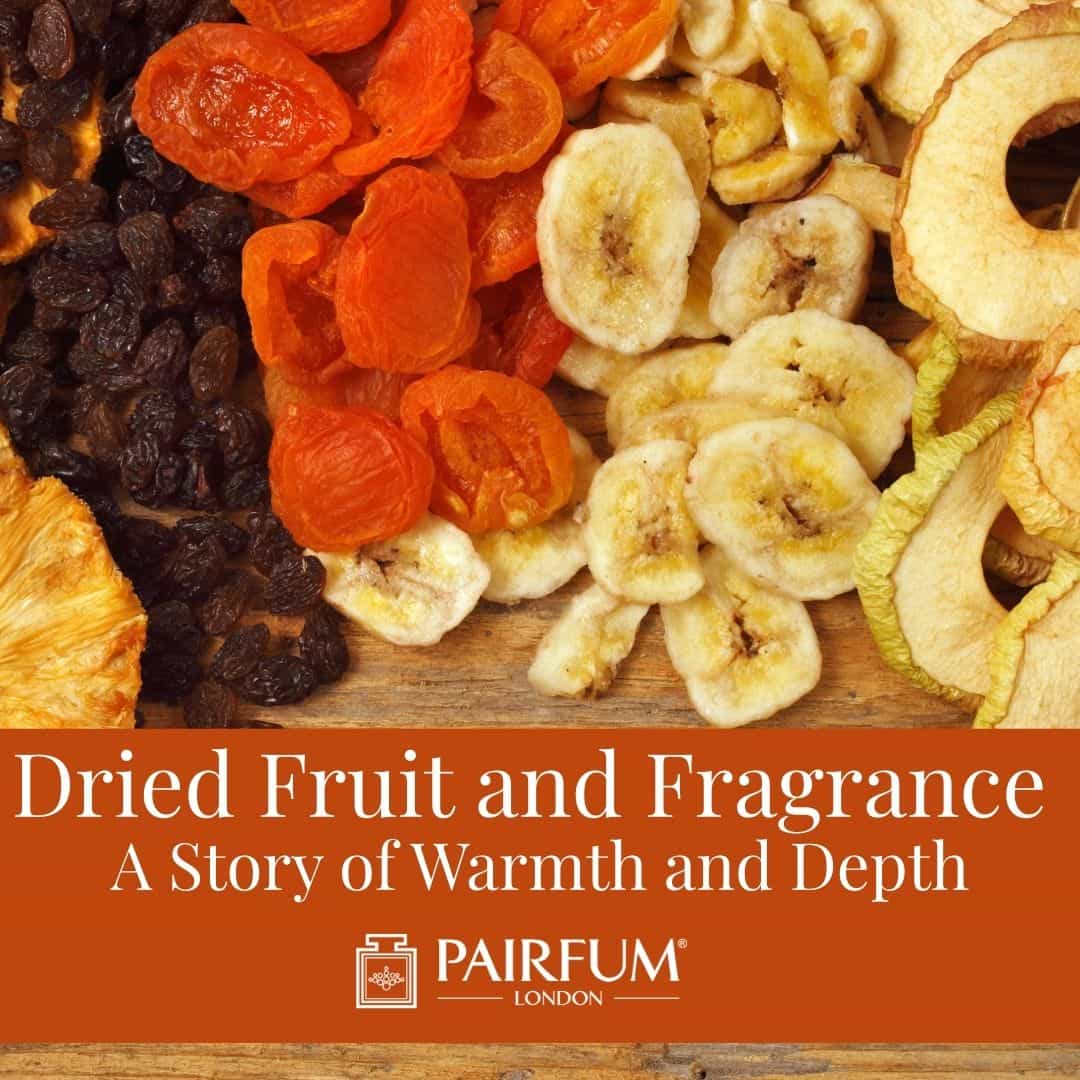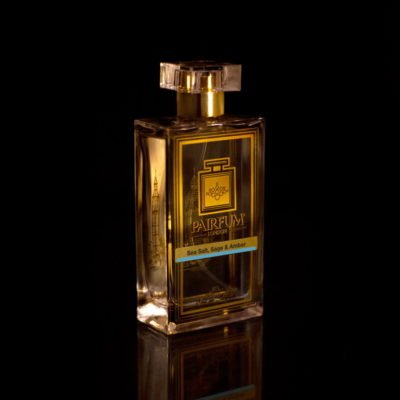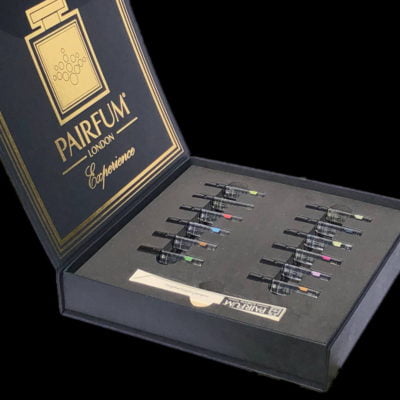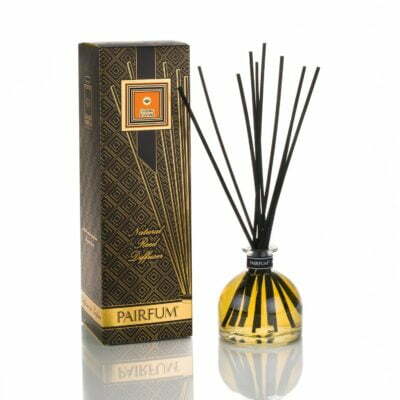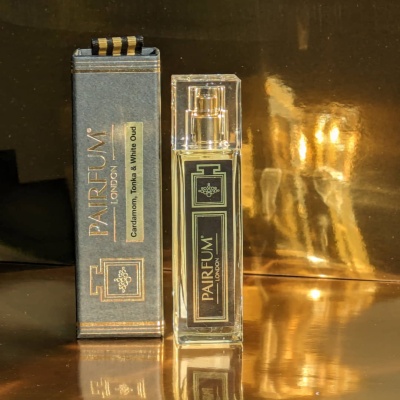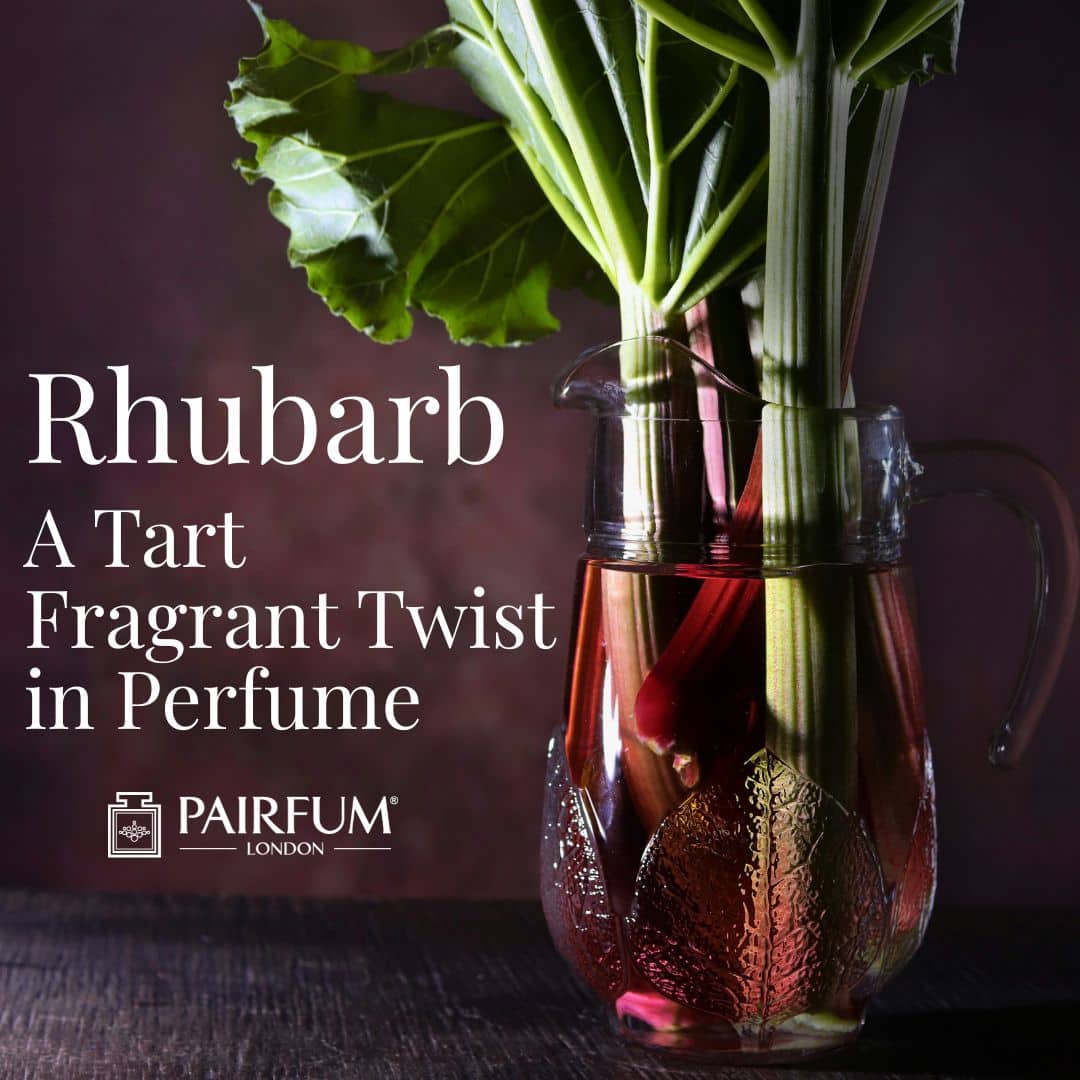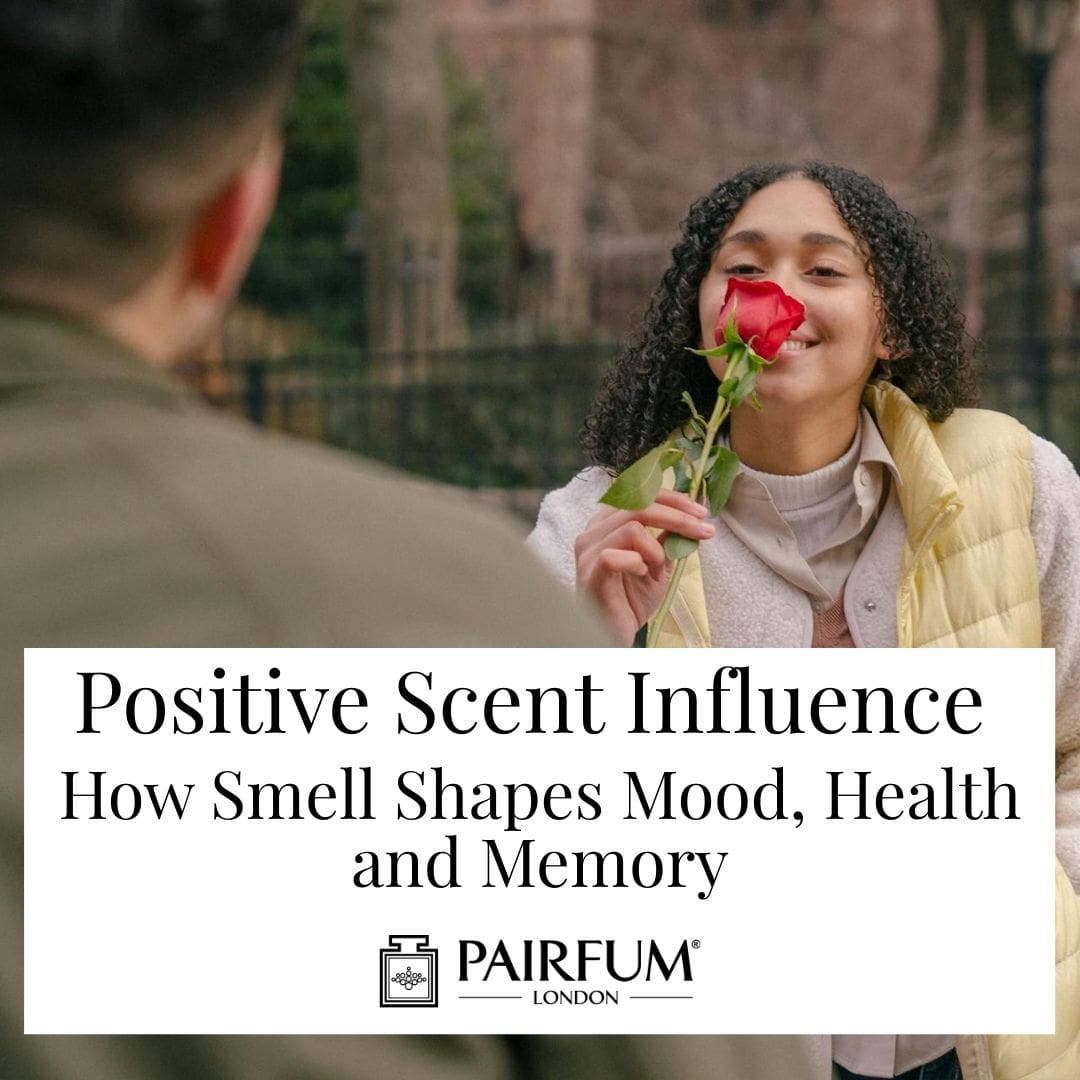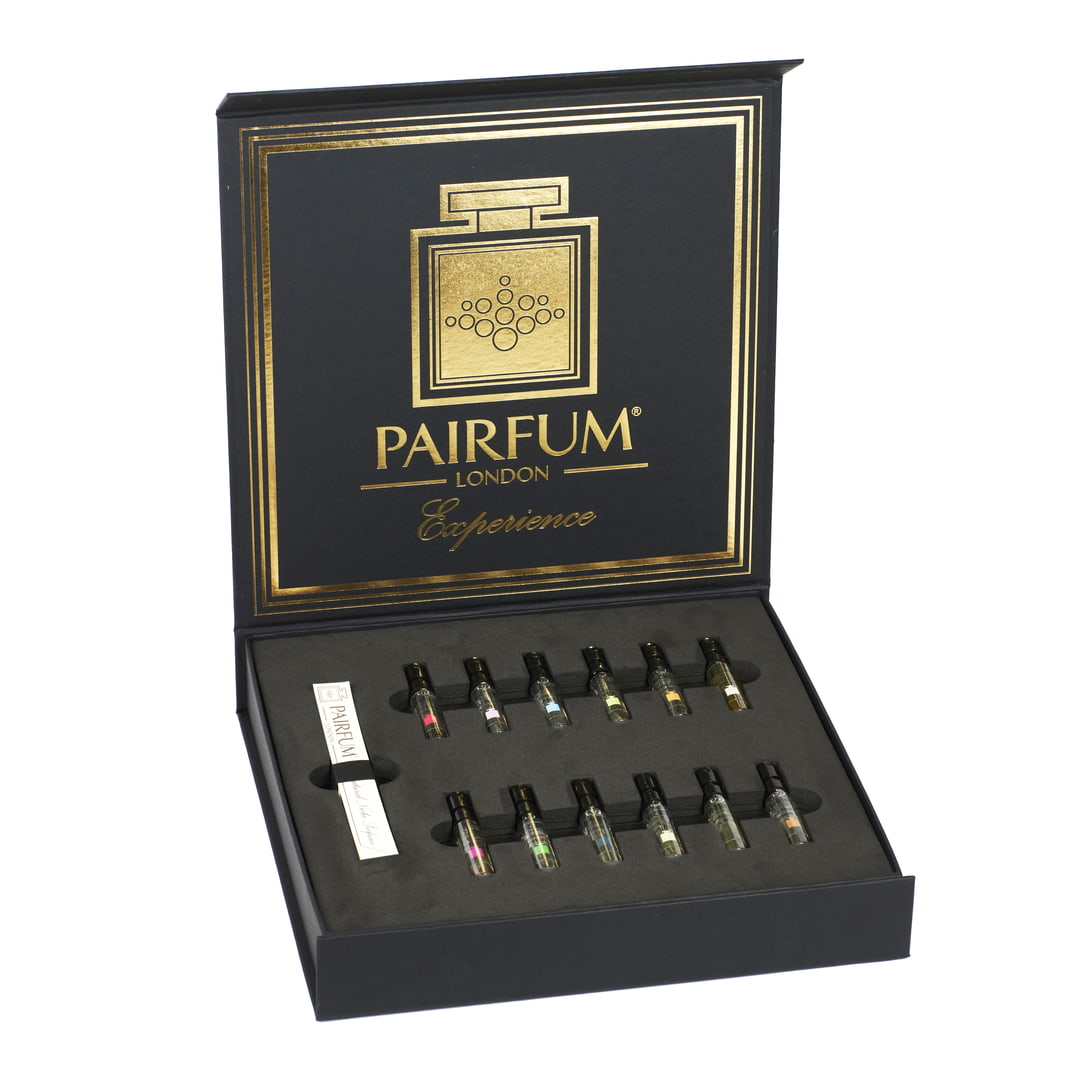Dried fruit has been valued and celebrated for thousands of years. In fragrance, dried fruit notes bring a unique richness that feels indulgent, layered, and long lasting. Unlike fresh fruit, which offers a sparkling impression but fades quickly, dried fruits unfold slowly and release depth and warmth. Whether the note comes from raisins, prunes, dried apricots, or even dried cranberries, the effect is both comforting and luxurious.
The aroma of dried fruits recalls sun-drenched orchards in autumn, mixed dried fruit traditions at winter feasts, or the unique sweetness of apricots preserved with natural sugars. These accords capture emotion and memory, offering scent compositions that are both familiar and expressive.
A Fragrant Line Through History
The tradition of drying fruit began out of necessity. By reducing water content through the drying process, people preserved natural sugars and flavour while protecting valuable nutrients and minerals. As these preserved treats travelled along ancient trade routes, dried fruits such as raisins, figs, dates, and apricots became symbols of prosperity and abundance.
In Egypt, dates and dried apricots were offered to the gods. In Greece, figs and nuts were part of ceremony and worship. The Romans feasted on raisins, prunes, mixed dried fruit and cashew nuts, often combined with honey. These early practices point to why dried fruits feel so culturally rich – they symbolised longevity, fertility, and indulgence.
Perfumed oils infused with dried cherries or pitted prunes merged nourishment with aroma. This dual symbolism continues today in perfumery, where dried fruit notes endure because they represent preserved time and concentrated essence.
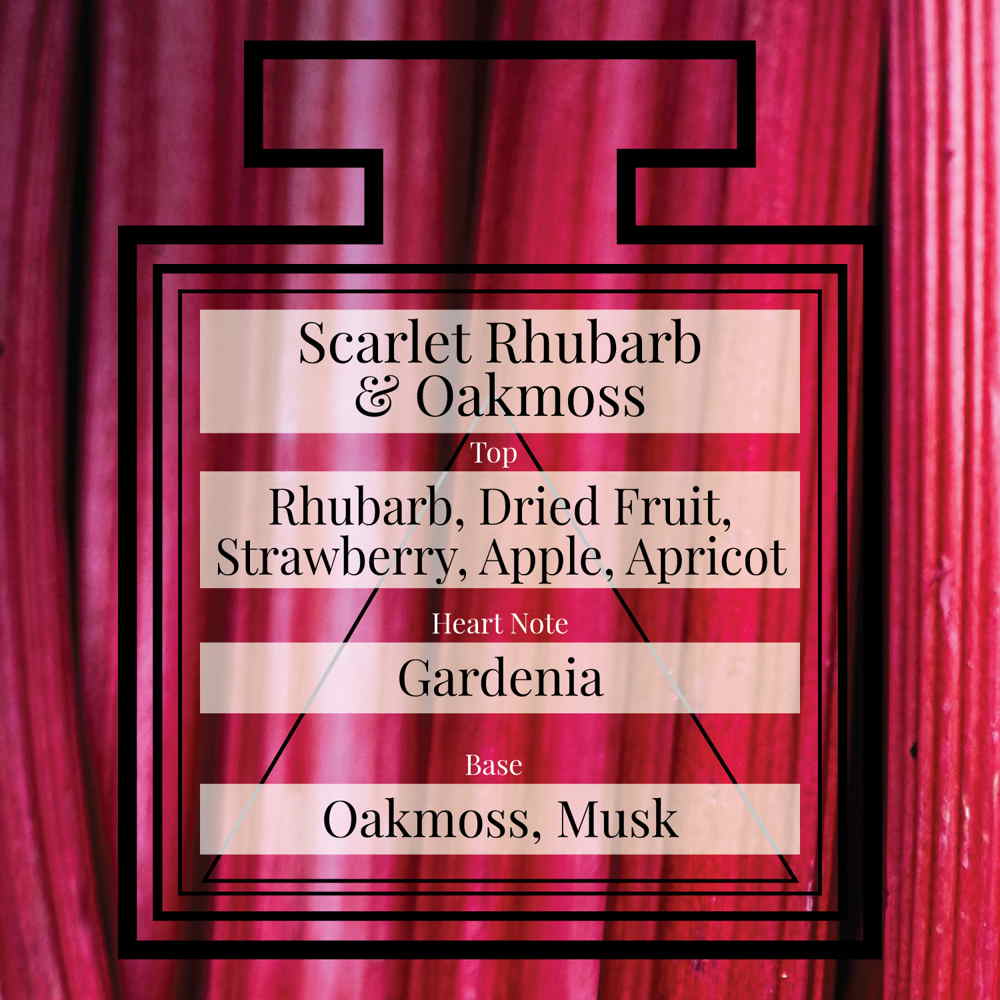
What Are Dried Fruit Notes in Perfume?
In perfumery, a dried fruit note is a carefully crafted accord designed to replicate the scent of preserved fruit. Natural fruits rarely yield direct essential oils after drying, unlike fresh fruit, so perfumers construct the note with isolates and absolutes.
The character of these notes is:
- Sweet and rich: Natural sugars sharpened by the drying process bring depth of flavour.
- Layered: With undertones reminiscent of raisins, dried cranberries, prunes or mixed dried fruit.
- Enduring: They last longer than citrus or other fresh fruit and stabilise fragrance blends.
These qualities make dried fruit accords common in gourmand, oriental, and woody perfume families where they balance florals, spices, and resinous foundations.
Different Types of Dried Fruits in Perfumery
Each dried fruit carries its own expressive qualities:
- Dried Apricot: A golden, nectar-like fragrance that feels delicate and mellow. Dried apricots lend warmth and marry well with florals.
- Fig: Nutty yet honeyed, often paired with nuts such as almonds or cashews, evoking a creamy gourmand aroma.
- Plum: Juicy and velvet-rich, ideal for sensual compositions.
- Raisin: Adds a wine-like tang, semisweet and complex, a key dried fruit that binds other fruity profiles. Raisins feature often in both fragrance and snacking.
- Prunes and Pitted Prunes: Dark and indulgent, reminiscent of molasses and depth.
- Dates: Syrupy and exotic, perfect with spice accords.
- Dried Cranberries and Dried Cranberry Notes: Sweet with a tart edge, offering freshness against heavier dried fruits.
- Goji Berry and Dried Goji Berry Notes: Sharp, intense, a modern dried food addition inspiring contemporary fragrances. Goji berries bring punchy energy.
- Dried Blueberry and Dried Berries Notes: Rounded and tangy with a distinctive wine colour in fragrance accords.
- Dried Cherries: Soft, sweet, and romantic, a fruity highlight.
- Banana Chips Accords: Sweet yet lightly savoury, reminding of playful snacking traditions.
These different dried fruits reflect abundance, creating accords layered like mixed nuts and seeds with dried food in snacks. The result is rich olfactory storytelling.
Cultural Symbolism and Meaning
Dried fruits are symbols of abundance across the world. In Middle Eastern culture, dates, apricots and raisins are combined with almonds, cashew nuts, pine nut, pecan nuts or brazil nuts as offerings of hospitality. In European traditions, mixed dried fruit features prominently in winter puddings, combined with oats, desiccated coconut, or juice-soaked raisins.
This link between dried fruits, organic nuts, vegetables, and festive tables underpins their association with richness and longevity. They are indulged as a healthy snack rich in nutrients and minerals but also evoked in perfumery to symbolise warmth, continuity, and family memory.
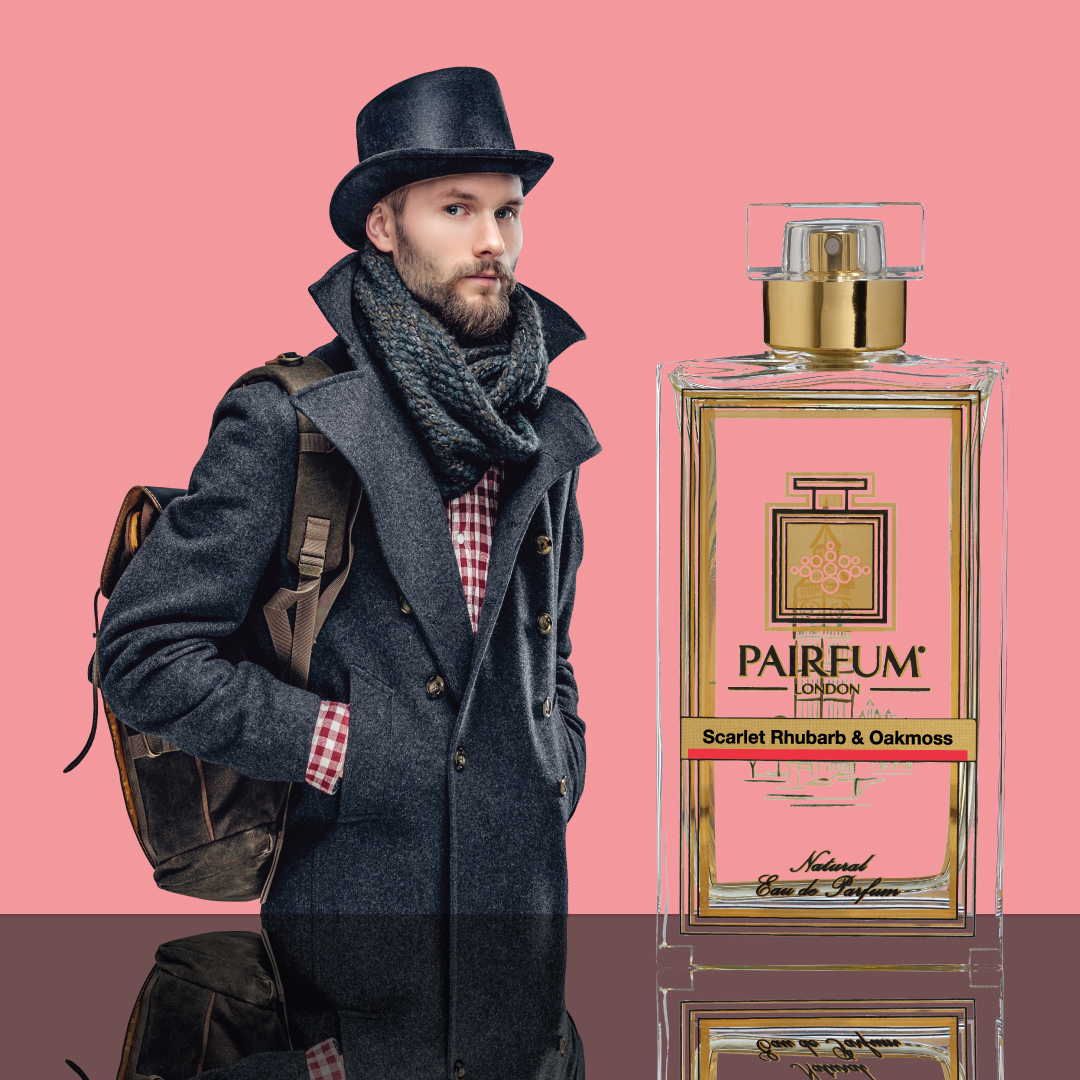
How Perfume Captures Dried Fruit
Because dried fruit does not yield much oil after the drying process, perfumers must construct accords that simulate their complex aroma.
- Solvent Extraction: Used for certain dried foods, capturing sweetness and depth.
- Reconstructions: Blends of natural isolates recreate characteristics of raisins, dried cranberries, apricots, or prunes.
The aim is to simulate the concentration achieved in drying, where fresh fruit becomes intensified by reduced water content, natural sugars rising to the forefront. In perfumery, this effect links directly to gourmand characteristics.
Pairings and Companion Notes
Dried fruit blends elegantly with many fragrance families.
- Spices: Cinnamon, nutmeg, clove, cardamom heighten warmth, resembling savoury dishes mixing dried cherries or raisins.
- Woods: Sandalwood and cedar ground sweetness.
- Nuts: Almond, brazil nuts, cashews, cashew nuts, pecan nuts, organic nuts and mixed nuts harmonise with dried fruits, similar to snacking mixes.
- Seeds and Grains: Sunflower seeds, pumpkin seeds and oats can accompany fruit notes, reflecting natural abundance found in mixed dried fruit and nuts.
- Florals: Rose and jasmine brighten apricot or prune-based accords.
The outcome is a balance between sweet indulgence, earthy depth, and nutty undertones.
Iconic Perfumes Featuring Dried Fruit Notes
Many fine fragrances use dried fruits to great effect. Fig and raisins may underpin oriental perfumes, while apricots or prunes balance floral or woody scents. Dried cherries, dried berries, or dried cranberries often add uplifting sparkle.
These dried fruit notes are versatile, enhancing everything from festive-inspired compositions to year-round signature scents. When layered with nuts or seeds, they symbolise comfort and refinement in equal measure.
Many acclaimed perfumes have used dried fruit accords to great effect:
- Serge Lutens Arabie: A celebration of spice bazaars with figs, dates, resins, and woods.
- Tom Ford Plum Japonais: A rich fragrance where plum merges with amber, cinnamon, and oud.
- Guerlain La Petite Robe Noire: Cherry and plum combined with rose and tonka, playful yet refined.
- By Kilian Black Phantom: Rum, caramel, and dried fruits fuse into an irresistible gourmand.
- Pairfum London Scarlett Rhubarb & Oakmoss: A bold floral Chypre fragrance with fruity top notes, a heart of white gardenia, and a rich oakmoss-musk base.
These examples highlight how dried fruit can transform a perfume into something layered, lasting, and unforgettable.
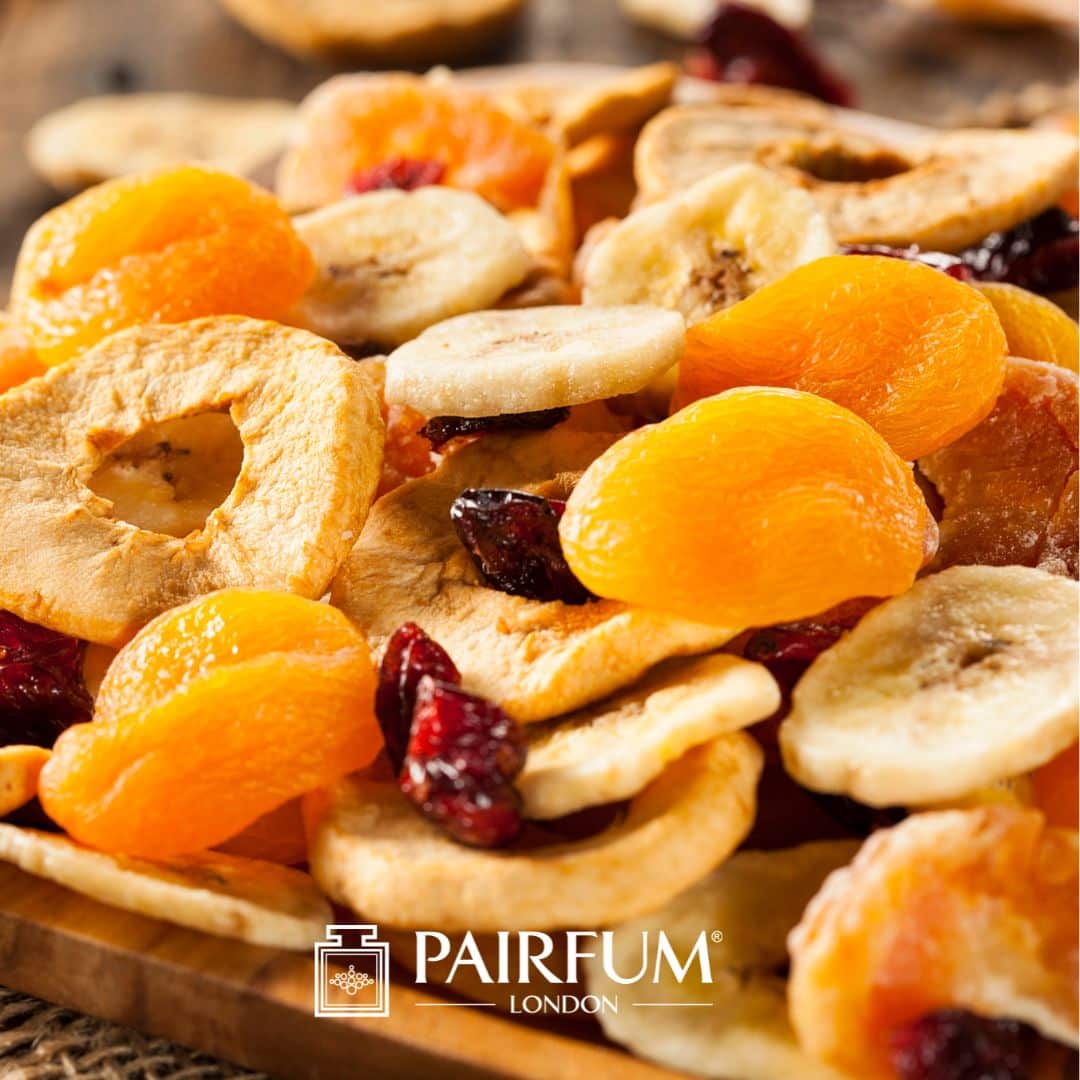
When To Wear Dried Fruit Fragrance
Fragrances rich in dried fruit accords work beautifully in cooler months when their warmth contrasts the weather.
- Autumn and Winter: Raisins, prunes, dried cranberries and apricots feel indulgent and cosy.
- Evening: Dried cherries, figs or dried blueberries combined with woods and spices create sophisticated elegance.
- Everyday Wear: Lighter dried fruits like apricot or raisin pair with florals for day-to-day refinement.
Much like enjoying snacking mixes of dried fruits, cashews, pecan nuts, and sunflower seeds as a healthy snack, perfumes using dried fruits are indulgent yet balanced.
The Emotional Power of Dried Fruit in Perfume
Fragrance is an emotional art form. Dried fruits hold deep memory and flavour, conjuring images of harvests, cherished rituals, and shared savoury dishes enriched with oats, vegetables, or nuts. These accords transport us, evoking the layered comfort of desserts, the generosity of family tables, and timeless traditions.
Dried fruits remind us of continuity and abundance, of indulgence balanced by organic fruit purity and nutritive minerals. The evocative character of raisins, prunes, dried apricots, and dried cranberries embodies the link between ancient practice and modern artistry.
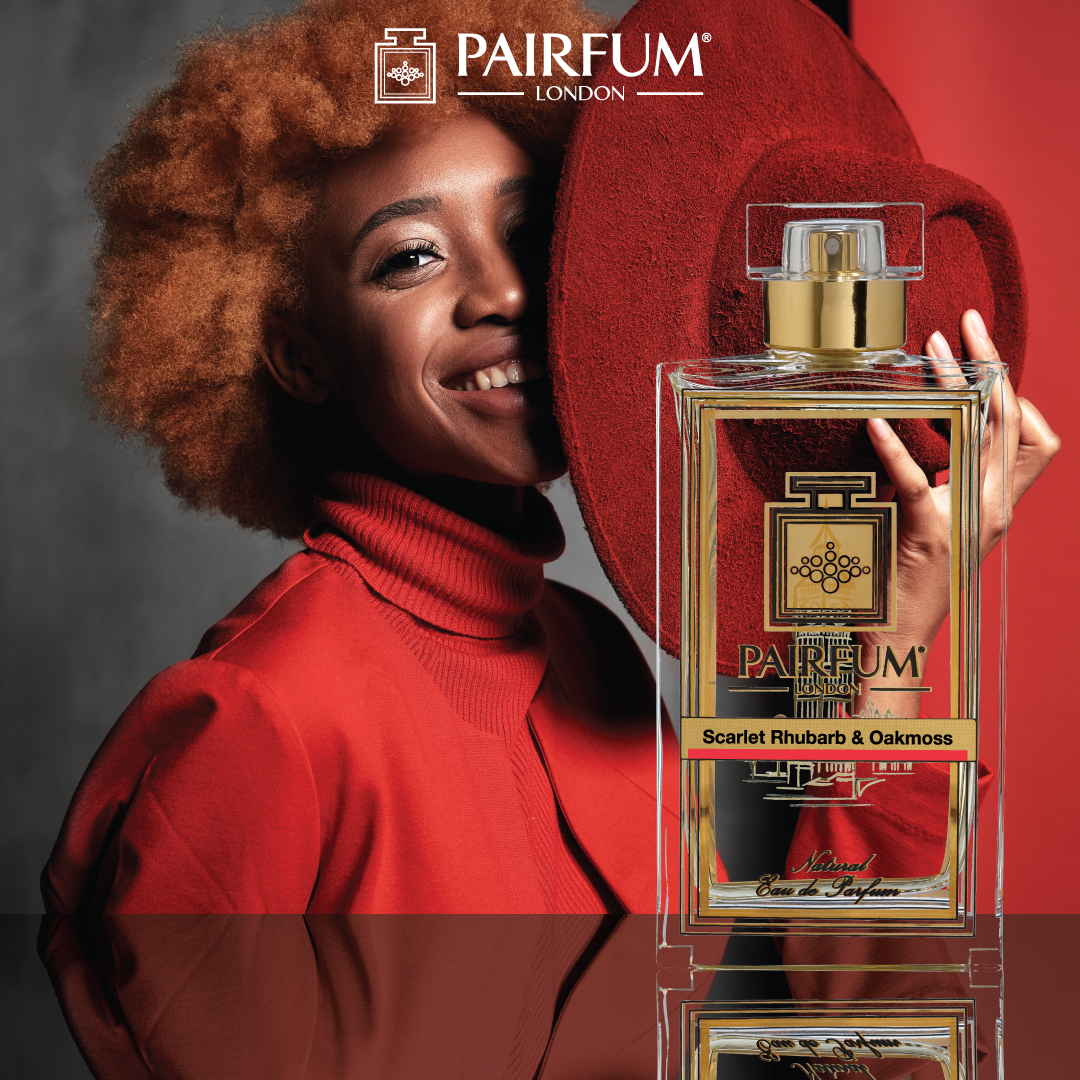
Tremendous Dried Fruit Top Notes with Pairfum London
Scarlet Rhubarb & Oakmoss – Eau de Parfum by Pairfum London
This bold, floral Chypre fragrance opens with a blend of fresh Tart Rhubarb, Sun-Dried Fruits and Ripe Strawberries. Hints of crisp Apple & Apricot wrap around the heart of elegant White Gardenia. The base of Oakmoss and Sensuous Musk provides a warm, rich and lingering drydown typical of a Chypre.
Conclusion
Dried fruit is more than an ingredient in perfume. It represents preservation, abundance, flavour, and creativity. From dried food preserving nutrients and natural sugars to accords that translate those qualities into fragrance, dried fruits bridge the gap between nourishment and artistry.
Whether through raisins, prunes, dried cranberries, apricots, banana chips, or dried cherries, these accords demonstrate why dried fruits, seeds, cashews, sunflower seeds, pumpkin seeds, brazil nuts, pecan nuts, pine nut, desiccated coconut, and organic nuts remain central to symbols of indulgence. Like mixed dried fruit and nuts enjoyed in snacking or savoury dishes, these accords provide balance, memory, and richness.
Dried fruits will continue to inspire perfumery thanks to their sensuality and their ability to transform fresh fruit sweetness into long lasting refinement.
